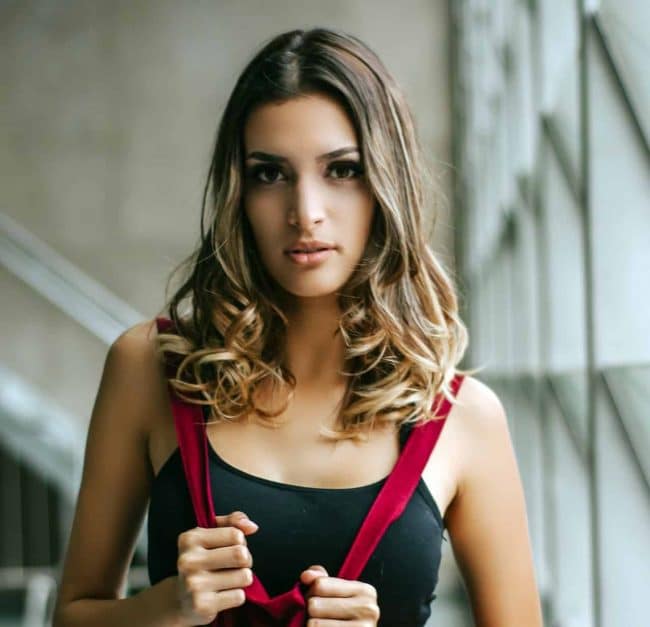The high glam, low maintenance, sun-kissed vibes of balayage and ombré styles are all over our hearts, our minds and Pinterest right now.
Both involve colour blending, both have multidimensional tones, both are absolutely fabulous. So what is the difference between balayage and ombré hair?
We’re here to tell you everything you need to know to help you decide which gorgeous hair trend is right for you!
Table of Contents
- What is the difference between balayage and ombré hair?
- Balayage vs Ombré | The Basics
- Balayage vs Ombré | The Pros and Cons
- Balayage
- Ombré
- Balayage vs ombré | How easy is it to do?
- Is balayage or ombré better for straight hair?
- Balayage vs ombré | Can I do it myself at home?
- Balayage vs ombré | How long do these styles last?
- Which one is more damaging for your hair?
- Parting words
What is the difference between balayage and ombré hair?
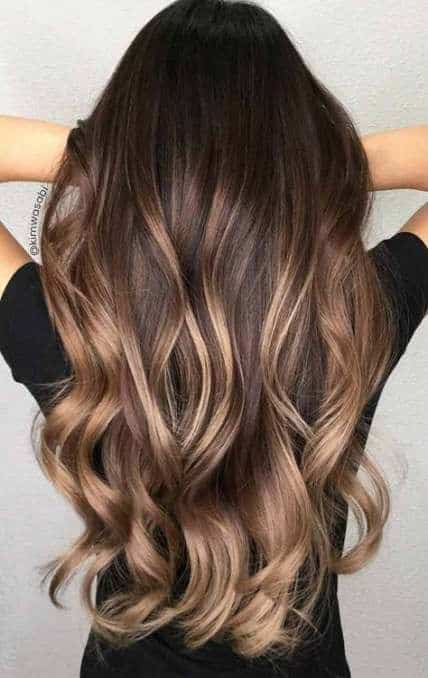

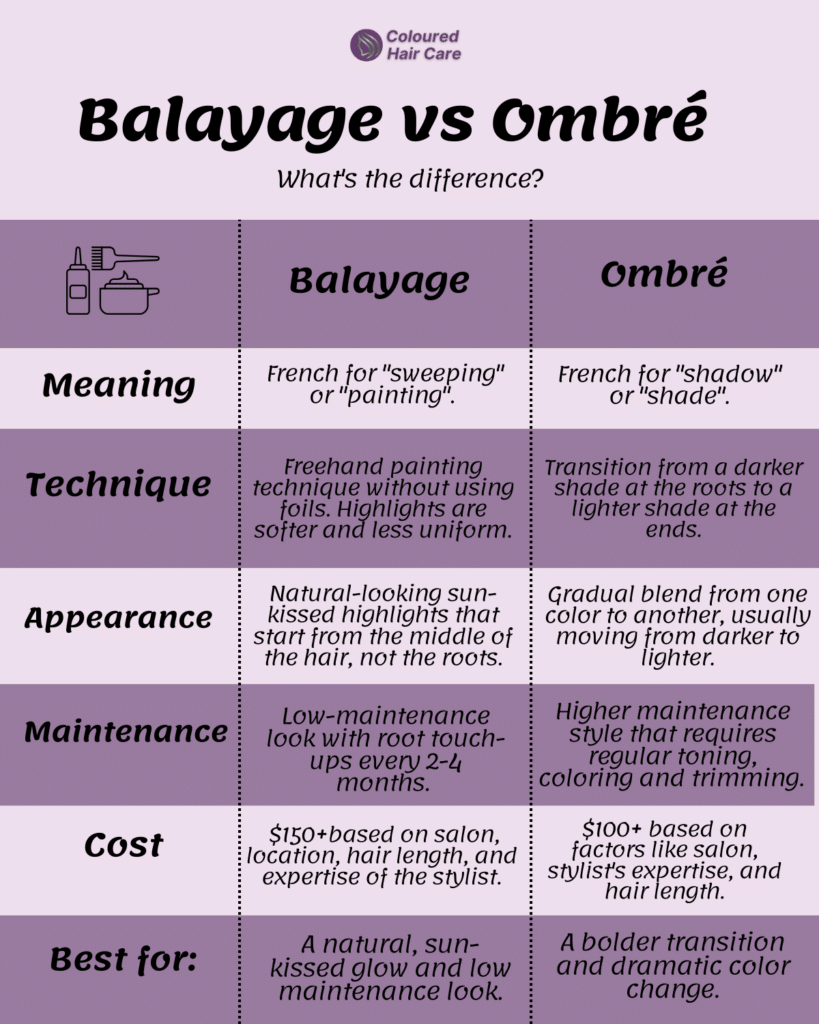
Balayage hair is a technique.
Did you know, the word “Balayage” comes from a French word meaning “to sweep”? And that’s just how the colour is applied to your hair – a hand painting technique done in small triangular sweeps cascading downwards. Darker strands left on the bottom create an added dimension and a more natural look.
Balayage can also be known as a colour melt or shadow root. It’s praised by hair experts for suiting almost every hair type, hair length, and skin tone and colour.
It’s a more subtle look than ombré and creates a natural effect since the highlights are painted on in places where the sun will naturally lighten your hair.
Balayage can be done on any hair colour and is particularly spectacular on blondes, red heads and brown hair balayage.
You can read more in our Balayage guide for beginners.
Check out the latest looks for ideas and inspiration.
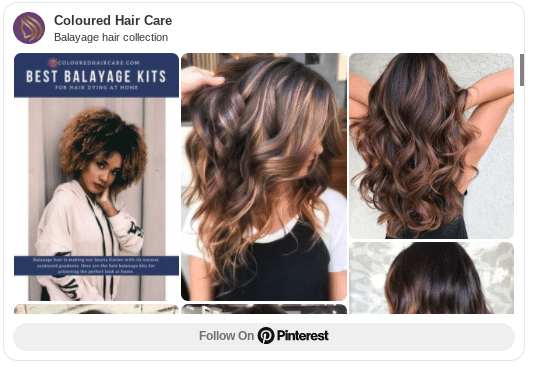
Ombré hair is a style.
Ombre hair is more of a style – and also a technique – where the lower section of hair is lightened which gives a more horizontal, band-like effect. It looks less natural, but just as fabulous as balayage hair.
Ombré hair is more of a statement. The dramatic, two-toned effect is typically darker on top and lighter on the ends of your hair.
It looks great and lasts longer when the darker roots are your natural hair colour and the bottom section is lightened hair. But colours work great too and anything goes with ombré – from silvers and reds to purple and blues.
Right now this trend is evolving into what’s known as Sombré look – a more subtle blend between the two tones so the line of the colour block is more blended for a fabulous feathery effect.
Find out more about it in How to ombré hair at home guide .
Check out the latest looks for ideas and inspiration.
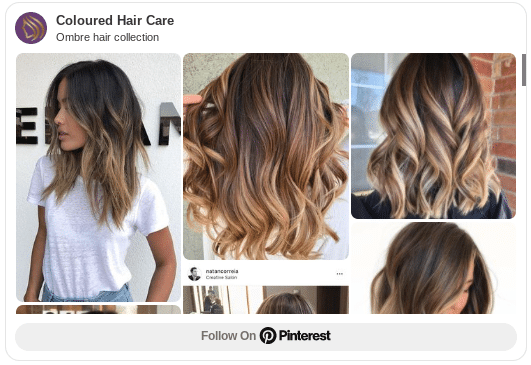
Balayage vs Ombré | The Basics
Both balayage and ombré involve lightening the hair and adding highlights, but that’s where the similarity ends.
Balayage is a freehand technique where the colorist hand-paints highlights onto the hair. This results in a natural, sun-kissed look that is low-maintenance and easy to grow out.
Ombré, on the other hand, involves gradually lightening the hair from top to bottom. This technique is perfect for those who want a dramatic, high-contrast look.
Balayage vs Ombré | The Pros and Cons
Balayage is often lauded for its low-maintenance qualities. Since the highlights are applied freehand, they can be customized to blend perfectly with your natural hair color.
This makes balayage an ideal choice for those who want to add a little bit of color to their hair without making a major commitment.
The downside of balayage is that it can be tricky to achieve even color with this technique. If you’re looking for perfectly placed highlights, then balayage might not be the right choice for you.
Ombré offers a more high-impact look than balayage, but it requires more upkeep.
Since the ombré effect is achieved by lightening the hair from top to bottom, it’s important to keep your roots touched up so that they don’t become too noticeable.
Ombré also has the potential to damage your hair if it’s not done properly!
If you’re considering ombré, be sure to consult with a professional colorist who has experience with this technique.
Balayage
Pros
- Low maintenance
- Can be customized to blend with natural hair color
Cons
- Tricky to place evenly
Ombré
Pros
- More high-impact look
Cons
- More upkeep required
- Potential for hair damage if not done properly
Balayage vs ombré | How easy is it to do?
Getting balayage hair is similar to traditional highlights, but without using foils. Highlights start at the root and get painted down to the tips of your hair, whereas balayage starts at the ends and is painted in sweeps up to the top.
The effect is not as bright as highlights and a more subtle, natural, sun-kissed effect than ombré.
As this is a technique, a lot depends on the application. This is where experience and expertise will create a better effect.
Ombré is an effect where you have to lighten or bleach the lower portion of your hair. This is also done without foils that are used to do highlights so it’s a less processed look.
You can create the look with a two-step process that involves dyeing your hair an all over base colour, before creating the gorgeous complimentary highlighted ends.
If you want to prevent a brassy or orangey colour, you can also dye the bottom part of your hair after you have bleached it. This can even out the tone.
Is balayage or ombré better for straight hair?
While balayage looks great on both straight and curly hair, adding slight waves and curls to the appearance can make it look more natural.
Ombré works on the same premise as balayage, but because the two-toned effect isn’t meant to look natural, the effects can look more dramatic.
If you have straight hair, ombré will look best as it will give some natural movement to the cut and keep it from looking too stiff.
Balayage, on the other hand, can make your locks appear more voluminous than they actually are because of its contrast between dark roots and light ends. So it looks better with natural-looking waves.
Balayage vs ombré | Can I do it myself at home?
The good news is you can achieve both of these looks at home with the right kit and patience!
There are a few balayage and ombré kits out there that come with the special instructions you’ll need to create the right effect.
In our experience, Balayage is an easier technique to do at home if – only because mistakes are less noticeable!
Balayage vs ombré | How long do these styles last?
When it comes to longevity, the truth is is that ombré is slightly higher maintenance.
This is because the ends of your hair are more processed with bleach or colour so they’ll become drier and need trimming more regularly.
In terms of colour, they both grow out great as there are no roots to worry about if you’ve kept your natural colour on top.
Balayage is also a great look for growing out highlights as they can be blended to create a fabulous dark root look.
Which one is more damaging for your hair?
When it comes to the damage caused by beautifying your locks, the difference between these two gorgeous styles is not a lot.
What will damage your hair is the use of bleach to lighten your hair. But in fact, both styles can be done without any bleach at all, depending on your base colour.
Once a week, use a deep conditioning mask like to replenish your hair with moisture and give it some love.
To keep brassiness at bay if you have blonde, lighter sections, you’ll need our best Purple shampoo.
Parting words
The difference between balayage and ombré hair is the way they blend colours.
Ombrés start with dark at the root and gradually get lighter as it goes down, while balayage is more gradual from top to bottom.
The guide has given you all the information you need to find the right technique or style for you.
But remember – it doesn’t matter which you choose so long as you love what you have done. Because when it comes to beauty, confidence really matters! Good luck!
